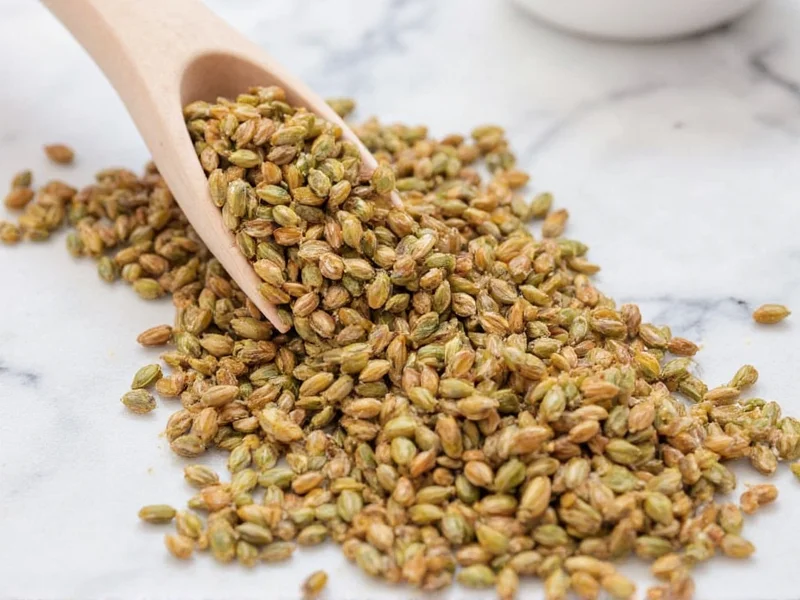Understanding this distinctive seasoning blend helps home cooks authentically prepare traditional dishes that feature organ meats. Unlike generic poultry seasonings, pluck seasoning contains specific herb combinations that cut through the richness of organ meats while complementing their unique flavors.
What Makes Pluck Seasoning Unique
Pluck seasoning stands apart from standard poultry seasonings due to its specific formulation for organ meats. The term 'pluck' refers to the edible internal organs of birds - primarily the heart, liver, and gizzard. Traditional pluck seasoning recipes balance earthy herbs with warming spices to complement these ingredients without overwhelming them.
Commercial pluck seasoning blends typically contain:
- Dried thyme (providing earthy notes)
- Ground sage (adding savory depth)
- Dried parsley (for freshness)
- Black pepper (for heat)
- Mace or nutmeg (for subtle warmth)
- Sometimes marjoram or savory
| Ingredient | Flavor Contribution | Traditional Ratio |
|---|---|---|
| Thyme | Earthy, slightly minty | 3 parts |
| Sage | Savory, slightly peppery | 2 parts |
| Parsley | Grassy, fresh | 2 parts |
| Black Pepper | Sharp heat | 1 part |
| Mace | Warm, nutty | ½ part |
Traditional Culinary Applications
Chefs preparing authentic British and Irish dishes rely on pluck seasoning for specific preparations where standard poultry seasonings fall short. The blend's balanced profile works particularly well with the stronger flavors of organ meats.
When cooking traditional boiled bacon and cabbage - a dish that often includes the pluck - adding pluck seasoning to the boiling water transforms ordinary organ meats into flavorful components. The seasoning penetrates the dense tissues during the extended cooking process, creating a harmonious flavor profile throughout the dish.
For home cooks exploring nose-to-tail cooking, understanding how to use pluck seasoning properly makes organ meats more approachable. The herbs and spices in the blend counteract any potential metallic notes while enhancing the natural richness of the organs.
How to Use Pluck Seasoning Effectively
Proper usage of pluck seasoning differs from standard meat seasonings due to the nature of organ meats. For best results when preparing traditional dishes:
- Add seasoning early in the cooking process for boiled dishes to allow flavors to penetrate dense organ tissues
- Use approximately 1-2 teaspoons per pound of meat
- Combine with aromatics like onions, carrots, and celery for boiled preparations
- Reserve some fresh herbs for garnish to provide brightness against the rich flavors
When making your own pluck seasoning blend, toast whole spices before grinding to maximize flavor. For traditional Irish boiled dinner, add the seasoning to the pot during the last 30 minutes of cooking to prevent the delicate herb flavors from dissipating.
Creating Your Own Pluck Seasoning Blend
While commercial pluck seasoning is available, crafting your own blend ensures freshness and allows customization. A basic homemade pluck seasoning recipe includes:
- 2 tablespoons dried thyme
- 1½ tablespoons dried sage
- 1½ tablespoons dried parsley
- 1 tablespoon freshly ground black pepper
- 2 teaspoons ground mace
- 1 teaspoon dried marjoram (optional)
Mix ingredients thoroughly and store in an airtight container away from light and heat. Properly stored, homemade pluck seasoning maintains peak flavor for 4-6 months. For enhanced flavor, consider adding a small pinch of cayenne pepper to modernize the traditional blend while maintaining authenticity.
Substitutes When Pluck Seasoning Isn't Available
If you can't find pluck seasoning, several alternatives work well in traditional recipes. The best substitute combines equal parts poultry seasoning and a pinch of mace. For a more authentic flavor profile, mix:
- 1 part poultry seasoning
- ½ part dried thyme
- ¼ part ground mace
While not identical, this combination approximates pluck seasoning's distinctive flavor. Avoid using standard poultry seasoning alone, as it typically lacks the mace that defines pluck seasoning's unique character. For traditional Irish dishes specifically, the mace component proves essential for authentic flavor.
Storage Recommendations for Maximum Freshness
To preserve pluck seasoning's complex flavor profile, proper storage proves critical. Exposure to light, heat, and moisture rapidly degrades the delicate herbal components. Store your pluck seasoning in an opaque, airtight container in a cool, dark cupboard.
Commercial blends typically maintain quality for 12-18 months when stored properly, while homemade versions last 4-6 months. To test freshness, rub a small amount between your fingers - vibrant pluck seasoning should release a strong, complex aroma. Discard any blend that smells dusty or lacks pronounced herbal notes, as this indicates significant flavor degradation.
Exploring Modern Applications
Contemporary chefs increasingly incorporate pluck seasoning into innovative dishes beyond traditional preparations. The blend's balanced profile works surprisingly well with:
- Roasted root vegetables (particularly parsnips and turnips)
- Bean and lentil dishes for added depth
- Stuffings for game birds like pheasant or quail
- Flavoring for meat-based stocks and broths
When experimenting with pluck seasoning in modern recipes, start with smaller quantities than traditional preparations require. The blend's distinctive profile can dominate more delicate dishes, so adjust carefully to achieve balanced flavor without overwhelming other ingredients.











 浙公网安备
33010002000092号
浙公网安备
33010002000092号 浙B2-20120091-4
浙B2-20120091-4